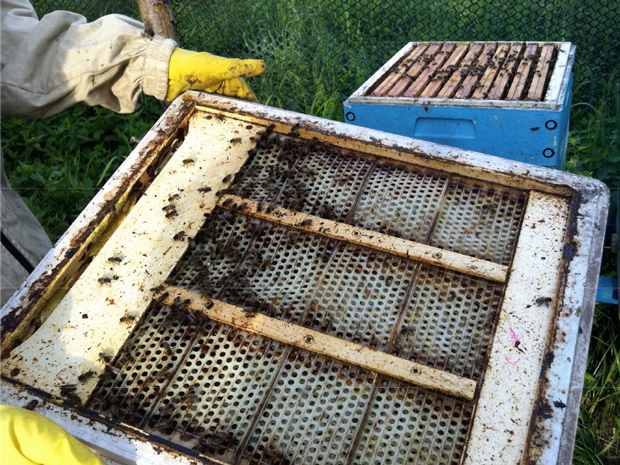
Read the latest Issue
Arkadiusz Jankiewicz, one of the laureates of the 2013 European Union Contest for Young Scientists (EUCYS) competition, attended this month’s EMBO conference on Stem Cells in Cancer and Regenerative Medicine, at EMBL Heidelberg.

The young researcher, in his third year of medical studies at the Medical University of Gdansk, Poland, came forward with a big smile and eyes brilliant with interest: “the science here is terrific: it is so motivating and inspiring to hear and read about all these forward-thinking projects and findings. It is sometimes a bit too precise for me to use directly in my studies but it is definitely a drive to continue in that direction”.
The project that won him the special EMBL prize at the 2013 EUCYS competition speaks for his scientific mind-frame when he looks for solutions. How far do honeybees travel to feed themselves and, as a consequence, what is the best place for bee-owners to place the hives? Placing microchips on your bees will not give you reliable information because the weight will make them fly shorter distances; there is now an easier, cheaper, and statistically strong method that you can use to find out.

Jankiewicz identified three indicative plants that grow only in specific areas around the hive he studied, amongst which manna ashes at a distance of around 1km, and buckwheat 2.7 km away. Using a simple and non-invasive pollen trap, he collected the pollen grains brought back by the insects at regular intervals between April and July 2011; he then analyzed these grains with a microscope (4800 in total!) and determined whether the ones specific to manna ashes, chestnuts or buckwheat were present. His conclusion was simple: when buckwheat trees blossom, bees can fly at least as far as 2.7km. Although there is indication in the literature that they can go further, he couldn’t find any indicative plant to verify that claim.
I looked for the same perfectness in other areas of biology
The study of honeybees is not in direct line with his medical studies, but they stem from the same interest in what is beautifully simple and effective in nature. “In high-school I was fascinated by genetics: it all seemed so ideally simple and effective,” Jankiewicz explains, “but I couldn’t find any opportunity to work in a genetics lab, so I looked for the same perfectness in other areas of biology and turned to social insects and bees: they are such fascinating insects!”

As a medical student, Jankiewicz now has an easier access to biology labs, and his interest had focused on cancers and, more specifically on hematopoietic and bone-marrow cancers. So the session by Camilla Forsberg, from the University of California Santa Cruz, USA, on how Robo4-mediated vascular integrity regulates hematopoietic stem cell trafficking was a highlight of the conference for him. However, with several years of studies still ahead, Jankiewicz still has some time to define clearly in what area of oncology he wants to unravel the beauty of biological processes.
He left with the leaflet for the PhD programme: see you in a couple of years?
Looking for past print editions of EMBLetc.? Browse our archive, going back 20 years.
EMBLetc. archive